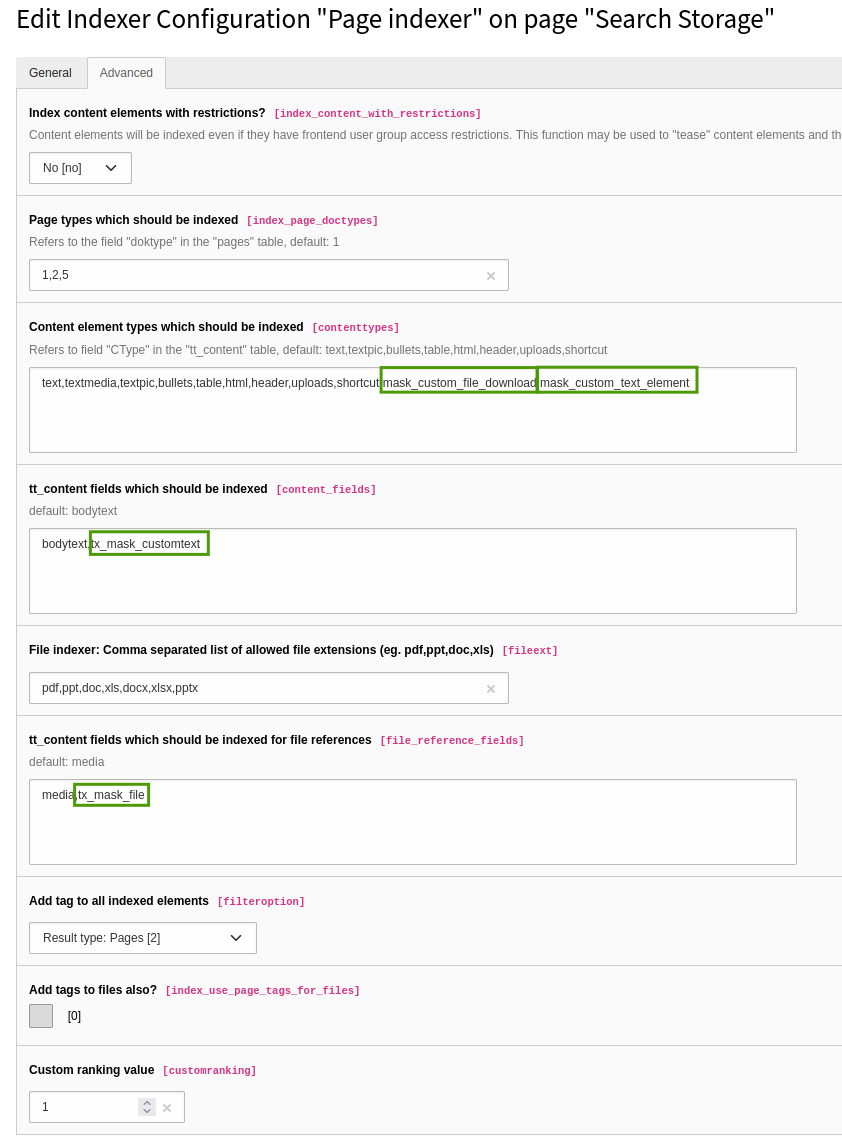Pages¶
The page indexer indexes standard TYPO3 pages.
All content elements on a page will be grouped and written to the index in one index entry. That means if your search word appears in two different text elements on a page, you will get only one search result for the page these two elements belong to.
The page indexer indexes content elements of the following types:
text
text with image / media element (textmedia, textpic)
bullet list (bullets)
table
plain HTML (html)
header
file lists (uploads)
referenced content elements (shortcut)
In the page properties there's the field Abstract for search result in the tab Search. Here you can enter a short description of the page, this text will be used as an abstract in the search result list. If this field is empty, it falls back to the field Description in the Metadata tab of the page properties.
Configuration¶
Set the type of the indexer configuration to
Pages.Set a title (only for internal use).
Set the field Storage to the folder where you want to store your search data.
Set Startingpoints (recursive) to the pages you want to index recursively.
Set Single Pages to the pages you want to index non-recursively.
Advanced options¶
If you set Index content elements with restrictions to
yes, content elements will be indexed even if they have frontend user group access restrictions. This function may be used to "tease" certain content elements in your search and then tell the user that he will have to log in to see the full content once he clicks on the search result.If you created custom page types which you want to index, you can add them in Page types which should be indexed set the page types you want to index.
in Content element types which should be indexed you can add your own content element types. For example those created with EXT:mask. If you are not sure what to enter here, have a look a the table
tt_contentin the columnCType.in tt_content fields which should be indexed you can define custom fields which should be indexed. Default is here "bodytext" which is used for the default content elements. This is useful if you added your custom content elements for example using EXT:mask.
Using the field :guilabel:``Comma separated list of allowed file extensions` you can set the allowed file extension of files to index. By default this is set to
pdf,ppt,doc,xls,docx,xlsx,pptx. For pdf, ppt, doc and xls files you need to install external tools on the server.Using the field tt_content fields which should be indexed for file references you can add fields from
tt_contentwhich hold file references and for which the attached files should be indexed.You can choose to add a tag to all index entries created by this indexer.
You can choose to add that tag also to files indexed by this indexer.
Example¶
This is an example for adding a custom content element types and a custom file reference field.

